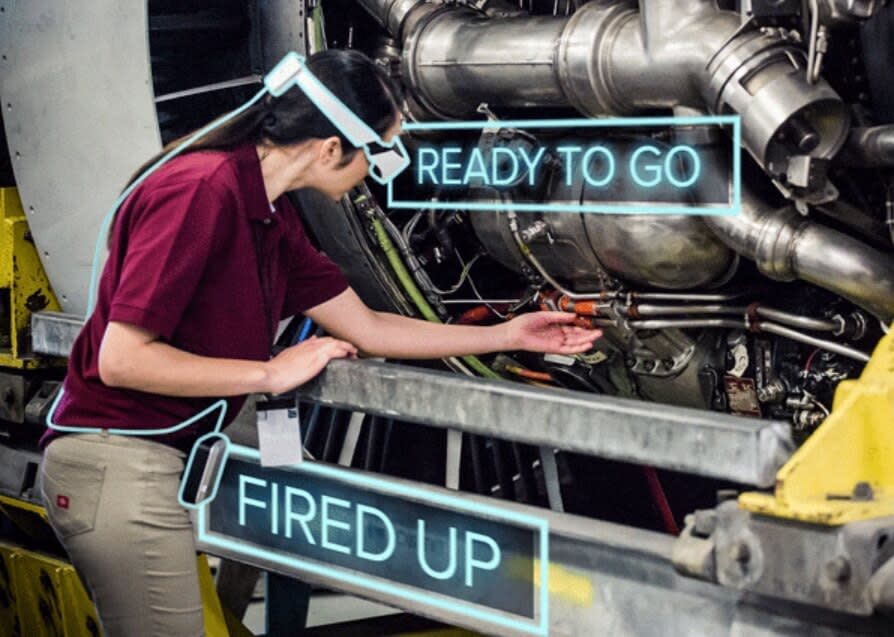6 ways to invest in augmented reality

You can download a high-resolution version of the AR landscape here.
Augmented reality is generating a lot of excitement, particularly with rumors that Apple will enter the market sometime soon, alongside such competitors as Microsoft and Google.
Digi-Capital, a tech advisor, believes that the combined market for augmented and virtual reality could be $108 billion by 2021. And 2016 was a critical year for AR, with new device announcements, major acquisitions, and massive adoption from consumers and enterprises alike.
Please check out our GamesBeat Summit 2017 event coming May 1-2 on the inspiration between science fiction, tech, and games. Use Deantak code for 20 percent off.
Super Ventures has sorted out the landscape of AR startups and has come up with six areas of opportunity for AR hardware and software, areas where investment dollars could make a big impact.
The AR ecosystem is complex, with multiple device categories, inputs and outputs, interaction tools, content creation, and platform solutions and applications to wade through. Tom Emrich, founding partner at Super Ventures, said his firm has met with and benchmarked over 600 AR companies in the past year. Here’s Super Ventures’ views on the investment opportunities in AR.
Bionic vision
In order for AR to hit the masses, the necessary hardware needs to be in the hands or on the faces of users, Emrich said. Although AR akin to that used in Pokémon Go is possible with today’s smartphone, true AR and mixed reality (blending the real world with computer-generated animations) require specific hardware solutions.
“The holy grail of AR is to enable graphical information to be indistinguishable from natural vision,” he said. “To achieve this, advancements in lightfield, retina projection, photorealistic rendering, adjustable focus and natural vergence and accommodation are needed.”
But bionic vision faces challenges beyond just the display. Battery life, connectivity, multi sensor-fusion, haptics, and audio are areas of opportunity hardware accelerators would do well to consider.

Above: Daqri is creating augmented reality headsets and helmets.
Image Credit: Daqri
Natural input/output (I/O) and interaction
AR is more than just augmenting our sight.
“We perceive this reality with all of our senses, from sound to touch and even our emotional reactions,” Emrich said. “In order for this new wave to be truly immersive, it is critical for digital solutions to bring these aspects of the human experience into the mix in order to interact with virtual content as if it was the real world.”
New inputs such as eye-tracking, gesture recognition, and voice move the technology beyond touch-and-tap to provide a more natural means of interacting with the augmented world. At the same time, haptics, augmented audio, and emotion tech solutions are required to make the virtual feel immersive.
3D-ifying the real world
The real shift behind this next wave of computing is the move from 2D to 3D computing. This requires solutions that can scan, capture, track, and recognize the 3D world.
But scanning and tracking places, objects, and people is challenging, especially on a large scale, Emrich said. And the race is on to map the world and create point clouds that developers can use to track the user’s position and overlay the surroundings with AR content. Equipping computers with the ability to not just “see” the world around them but to make sense of it is a critical component to AR and presents both wide and niche opportunities.
World building
With computers able to track and recognize the real world around us, developers and designers will have the foundation they need to begin personalizing, shaping, and augmenting it with a virtual layer, essentially creating a metaverse, Emrich said.
And this will require a new set of tools that allow quick capture and modification of content from the real world, and well as intuitive creation of new content. Content creation and authoring tools, tools to measure and optimize the user experience, and solutions that manage the versioning, quality assurance, optimization, and workflow between team members of 3D content represent just a few of the opportunities to equip AR content creators.
Telepresence
Each wave of computing follows a similar pattern to the last, so if we are to take cues from the web and mobile era, we can expect that one of the killer apps for AR will be communication and collaboration, Emrich said.
Immersive communication, large-scale social experiences, and communicating with remote people as if they were in the same room are just some of the opportunities we can expect AR to usher in. The technology is uniquely positioned to offer true telepresence, along with increased empathy, when distance is no longer a barrier to having a friendly chat, collaborating on an important project, or even troubleshooting a critical issue on site.
Super intelligence
Technology has always been able to augment our capabilities.
“AR will take this to the extreme,” Emrich said. “With transparent computing power in our field of view, employees in training can be turned into professionals on their first day. And the entire knowledge of the world wide web can be ours without having to log on and stare down at a screen.”
The enterprise is ripe for disruption from AR, which promises to make workflows more efficient and safe and workers more productive, especially now that devices have reached an affordable price point. Solutions that enable knowledge-sharing, the utility to a specific vertical — such as construction, oil, mining, or retail — and even workplace productivity tools are great opportunities for investment today.


